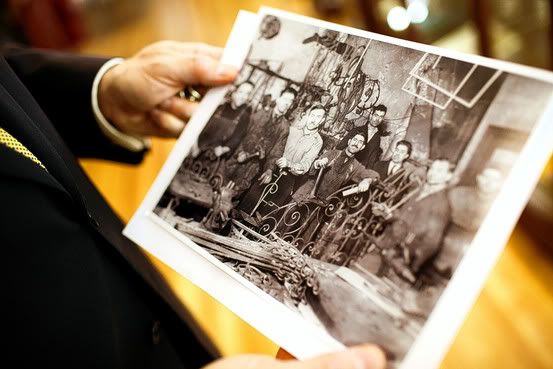Until I visited the Italian American Museum last week, I was unaware that Italians, among them the great Metropolitan Opera singer Ezio Pinza, were sent to U.S. detention camps during World War II, though in smaller numbers than Japanese-Americans. "He was at Ellis Island," Dr. Joseph Scelsa, the museum's founder and a professor emeritus at Queens College, said as he pointed out one of the pink cards issued to detainees. "They had to carry them like identity cards. [Mayor] La Guardia was able to get him out after several weeks."The museum is housed in a three-story building at the corner of Mulberry and Grand that was once the Banca Stabile, an institution that opened in 1885 and provided not only traditional banking services but also arranged steamship passage for immigrants and found them housing and even jobs once they arrived. The museum opened at its current location in 2008.There's a frankly hodge-podge cast to the exhibits—organ-grinder carts, hand-carved puppets, Frank Serpico's service revolver and a framed basketball jersey from the Knicks' Danilo Gallinari compete for space and attention with historical artifacts such as the $30 steamship ticket that brought a relative of movie director Francis Ford Coppola to the U.S. in 1903 and a "Black Hand" letter—an extortion note—sent to one of Dr. Scelsa's relatives in 1917. "We will burn the face of your daughter," it reads in part, and for good measure it includes rudimentary drawings of skulls with daggers through them. "Probably stilettos," Dr. Scelsa observed. "They were small gangs that existed at the turn of the century and used the cover of anonymity of the Black Hand. You'd be surprised how many people visit the museum and tell me similar stories."
Wednesday, June 16, 2010
The Italian American Museum: 155 Mulberry Street
an excerpt from the Wall Street Journal, by Ralph Gardner
Subscribe to:
Post Comments (Atom)



























No comments:
Post a Comment